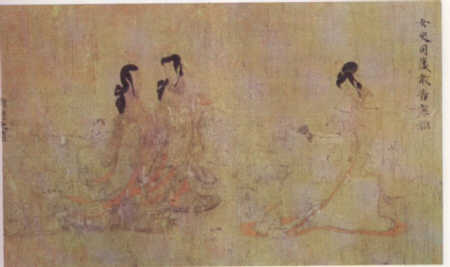Gu Kaizhi paid great attention to details that revealed the characteristics of the figures he drew. Once he was asked to paint the portrait of a man called Pei Kai, who had three long fine hairs on his face that had been ignored by other painters. Gu laid great emphasis on the three hairs, and Pei was very satisfied. Another time, he portrayed the man Xie Kun standing in the midst of mountains and rocks. When asked about the reason, he explained that Xie loved to travel to see beautiful mountains and rivers. This story demonstrates that Gu was skillful at drawing surroundings that enhanced the characteristics of the painted figures.

Nushi Zhen Painting by Gu Kaizhi
Gu also made great advances in summarizing painting theories. His theoretical works includedPainting Thesis and Notes on Painting the Yuntai Mountain. He paid considerable attention to the vivid expressions of the figures to show their spirit. HisGraphic Theorylater became a basic theory for traditional Chinese painting. According to historical records, Gu created more than 70 paintings based on historical stories, Buddhas, human figures, birds, animals, mountains and rivers. His three existing scroll paintings areNushi Zhen Painting,Luoshen Appraisal PaintingandLienu Renzhi Painting; these are the earliest examples of scroll paintings.
The theme of theLuoshen Appraisal Paintingwas drawn fromthe article, Luoshen Appraisal, written by Cao Zhi, son of the Wei Emperor Cao Cao. It depicts the meeting of Cao Zhi and Goddess Luoshen at the Luoshui River. The picture vividly portrays the moods when they first met each other and when they were finally forced to separate. Gu emphasized the expressions of the figures; the stones, mountains and trees in the picture are for ornamental purposes. Gu's paintings are similar in style to theDunhuang murals, and had a big influence on later traditional Chinese paintings.
